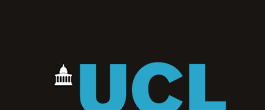|
| Channelopathies Group |
Channelopathies Homepage
We are a loose affiliation of researchers investigating how changes in ion channels (particularly changes linked to human diseases) lead to changes in the excitable properties of cells. We currently express five different types of ion channels in four different types of cells, but are almost always ready to try new combinations. Our work touches on epilepsy, migraine, ataxias, and myotonias - roughly speaking inherited paroxysmal disorders of the nervous system - diseases where patients go along fine until *something* triggers an attack of symptoms, a seizure, headache or episode of weakness. Current channels in our freezers: sodium channels, potassium channels, chloride channels, NMDA receptors and calcium channels. On a day-to-day basis the group is led by Stephanie Schorge the Pewterers Fellow. |
 |
Researchers in the group
- Clare Farmer: Impact and regulation of alternative splicing in sodium channels
- Emily Fletcher: Regulation of sodium channel splice variants by g-proteins and accessory subunits
- Emma Matthews: Functional impact of mutations in SCN4A
- Sanjeev Rajakulendran: Functional characterisation of mutations linked to ataxia and epilepsy
- Christina Schlichting: Generation and expression of viral vectors
Handy links
Google! UCL IS HTML NCBI ENSEMBL Molecular Workbench NEB Wikipedia London weather news
Who we are in context:
The group is located in The Institute of Neurology, Queen Square, and is a part of the Paroxysmal Disorders Research group, the MRC Centre for Neuromuscular disease, and spans the departments of Clinical and experimental epilepsy and Molecular neuroscience.
The group is funded by the MRC, the BRT, the Wellcome Trust as well as the Worshipful Company of Pewterers
 |
 |
| Collaborators in ION : | General interests: | Some collaborators outside: | General interests: |
| Dimitri Kullmann | Synaptic physiology | Holger Lerche | Channelopathies, genetics and functional studies |
| Matthew Walker | Cellular mechanisms of epilepsy | Massimo Mantegazza | Channelopathies, genetics and cellular biology |
Mike Hanna |
Neuromuscular disorders - genetics | Andrea Townsend-Nicholson | Biochemistry of receptors (and the odd channel) |
Kirill Volynski |
Synaptic imaging | ||
| Susan Tomlinson | Nerve excitability studies | ||
| Nick Wood | Genetics of paroxysmal disorders |
